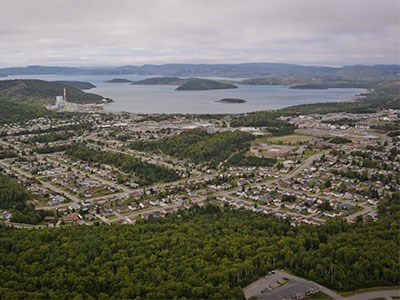The demolition of Marathon’s pulp mill is clearing the way for a new school of thought surrounding the forestry industry.
The town lost its pulp mill in 2009, but there are new opportunities emerging in the bioeconomy that have town officials wondering if the town of 3,350 can develop a sustainable manufacturing base of companies making biomass-based pharmaceuticals, cosmetics, or bio-degradable plastics.
“We’ve made it clear that the Marathon Economic Development Corporation will take advantage of anything and everything under a green umbrella,” said economic development officer Bob Hancherow. “We don’t need dirty industry. What we’ll be looking at on that (mill) property will be a green industrial park and tourism flourishing in the same location.”
Hancherow said a number of companies specializing in wood pellets and bio-refining technology have expressed a keen interest in setting up shop in Marathon once the mill structures are demolished and the land becomes available from Tembec.
“Once that mill structure is gone, that parcel of land will become very attractive and open up numerous doors of opportunity,” said Hancherow.
Tembec owns more than 2,000 acres in the area, including 883 acres at the mill site, and is quite willing to sell.
Besides an abundant fibre basket, under the control of a new Crown forest management corporation, Marathon has a network of air, road and rail links with a natural harbour and a commercial dock at the old mill site.
On the mining side, Stillwater Canada has temporarily halted development of its Marathon PGM mine while the Montana miner reworks the project economics, but the company still maintains a strong local presence with an ongoing exploration program that’s attracted a slew of prospectors and junior miners working ground to the west of the proposed mine site.
Hancherow said there’s no sign the drill rigs and geologists are going home anytime soon.
And Barrick Gold, a major area employer, is still going strong despite the closure of the David Bell Mine in the Hemlo complex.
Showcasing the spectacular Lake Superior coastline to tourists is one area of promotion that could use some refreshing, he said.
The town is working with a number of trail groups and renowned outdoor photographers and paddlers Gary and Joanie McGuffin on a Lake Superior Water Trail network featuring the painting sites of the Group of Seven artists.
“Our culture has been pulp mills and mining. It’s good timing to take a strong look at tourism.”




